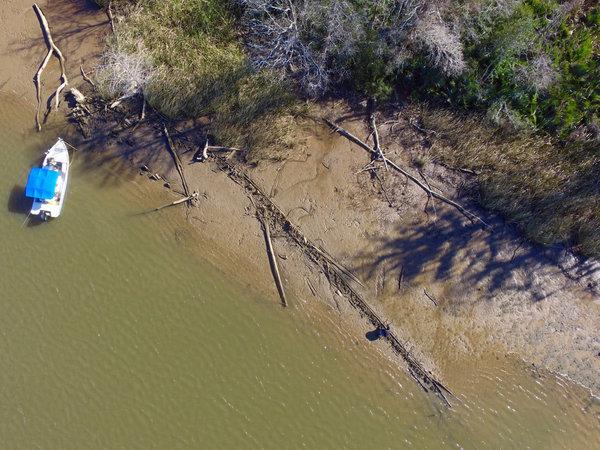‘Extraordinary archaeological find’: Last known US slave ship found in Alabama

The last U.S. slave ship, the Clotilda, was finally located at the bottom of the Mobile River in Alabama after a lot of searching.
The announcement comes one year after the release of the lost interview with a survivor of that ship by Zora Neale Hurston, and only a month after a scholar discovered that the last survivor of Clotilda lived until 1937.
It holds special significance for the residents of Africatown, Alabama, many of whom are descended from the Africans illegally trafficked on the Clotilda in 1860.
“It’s a wonderful discovery,” says Sylviane A. Diouf, a visiting scholar at Brown University’s Center for the Study of Slavery and Justice and author of Dreams of Africa in Alabama: The Slave Ship Clotilda and the Story of the Last Africans Brought to America.
“This is the only one so far that has been found which came directly from Africa to the Americas with people on board.” (The recently-discovered São José was on its way to Brazil but crashed in South Africa near Cape Town.)
The discovery is also significant because the Clotilda is already the most well-documented slave ship story in the Americas. “If it had only been a ship without the story, then that’s interesting,” Diouf says. “But we have the entire story.
So this is the first time that we have the entire story of what happened to the people who were on the ship and we have the ship as well.”The research initiative that found the Clotilda was partly motivated by the discovery of another ship in January 2018 that some thought might have been the Clotlida.
Afterward, the Alabama Historical Commission funded further efforts to find the Clotilda, which a slave trader had burned and then sunk to the bottom of the river to hide the evidence of its illegal journey.
Excavators ended up combing through a section of the Mobile River that had never been dredged before. Among the many sunken ships there, they found one that historians could confidently say matched the description of the Clotilda.

The more than 100 African children, teenagers and young adults on the Clotilda arrived in Alabama just one year before the Civil War.
When the U.S. officially abolished slavery in 1865, these young people had no means to travel back home, so some created a community called “African Town” in Alabama. The town helped preserve the stories of these people, some of whom carried their memories of capture and enslavement into the 20th century.
Unlike most slave ship survivors in history who remained largely undocumented, we have pictures and interviews of people who came over on the Clotilda. We even have film footage of the last known survivor, a woman born with the name “Redoshi” who went by “Sally Smith.”
When Zora Neale Hurston interviewed Cudjo Lewis, a founding member of African Town in the 1920s and ‘30s, he could still remember the disorienting trauma of being captured and enslaved at age 19.
“We doan know why we be bring ’way from our country to work lak dis,” said Lewis, originally named “Kossula.” “Everybody lookee at us strange. We want to talk wid de udder colored folkses but dey doan know whut we say.”
It’s not clear what will happen to the Clotilda’s remains, but residents of Africatown hope to highlight it in a way that draws tourism and business.
Africatown is home to a low-income community that has survived Hurricane Katrina and dangerous levels of industrial pollution, including from the BP Deepwater Horizon oil spill.
One option is to create a water memorial that people can visit, like the one commemorating the U.S.S. Arizona in Pearl Harbor.“As a symbol, I think it’s crucial,” Diouf says of the discovery. “And I think for Africatown today, which is really a community that is struggling very much, it really puts Africatown on the map. And hopefully some good will come out of it.”
Source: usatoday





